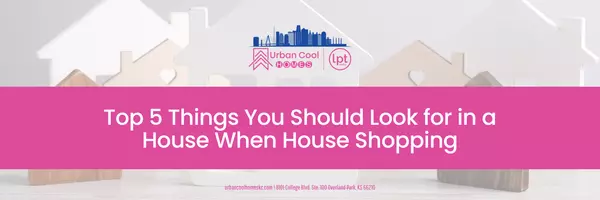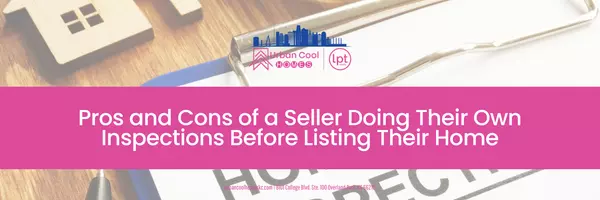The First 3 Steps To Take When Buying A Home

Buying a home is one of the most exciting—and important—decisions you’ll ever make. Whether you’re a first-time buyer or looking to move into your forever home, the process can feel overwhelming without a roadmap. That’s why starting with the right steps can set you up for success, reduce stress, and potentially save you thousands of dollars. If you’re wondering what to do first when buying a home, you’re in the right place. These first 3 steps to take when buying a home aren’t just helpful—they’re absolutely critical to making smart, informed decisions that lead you to the right home, at the right price, with the right support.
Let’s break it down:
The First 3 Steps To Take When Buying A Home
Step 1: Get Pre-Approved for a Mortgage
Why it matters: Confidence, clarity, and credibility
Before you start scrolling through listings or scheduling showings, your first step should be connecting with a trusted mortgage lender to get pre-approved. Pre-approval gives you a clear understanding of how much home you can afford, what your monthly payments might look like, and how different interest rates or loan products will affect your bottom line.
What does "pre-approval" mean?
Pre-approval is a lender’s conditional commitment to loan you a specific amount based on a review of your income, credit score, debt-to-income ratio, and other financial information. It’s more than a pre-qualification (which is often just an estimate) and shows sellers you’re a serious buyer with real financial backing.
What documents do I need for pre-approval?
To get pre-approved, you’ll typically need:
-
Proof of income (pay stubs, tax returns, W-2s)
-
Proof of assets (bank statements, investment accounts)
-
Good credit (ideally 620+, though some loan types allow lower scores)
-
Employment verification
-
ID and Social Security number
A reputable lender will walk you through the process and help you understand the best loan options for your situation—conventional, FHA, VA, USDA, jumbo loans, or other products.
Benefits of getting pre-approved:
-
You know your budget. No more guessing—start your home search with confidence.
-
You’re more competitive. Sellers take pre-approved buyers seriously, especially in a multiple-offer scenario.
-
You’ll move faster. Pre-approval shortens your timeline once you’re under contract, making closing smoother and faster.
Step 2: Choose the Right Real Estate Agent
Why it matters: Expertise, negotiation power, and local insight
Once you’ve secured a pre-approval letter, your next move should be choosing a real estate agent who fits your needs, your personality, and your home-buying goals. The right agent can save you time, money, and headaches throughout the process.
What does a buyer’s agent do?
A buyer’s agent is your advocate. They help you:
-
Find homes that match your criteria
-
Schedule and attend showings
-
Analyze the value and condition of homes
-
Write competitive offers
-
Negotiate terms and repairs
-
Navigate inspections, appraisals, and closing
And here’s the best part: In most cases, working with a buyer’s agent costs you nothing. Their commission is typically paid by the seller at closing.
How to choose the best real estate agent:
Not all agents are created equal. Look for someone who:
✅ Specializes in the area or neighborhood you’re buying in
✅ Has experience with your price point and home type
✅ Has strong reviews or referrals from past clients
✅ Communicates clearly and regularly
✅ Understands current market trends and pricing strategies
✅ Has access to both on-market and pre-market (coming soon) listings
Don’t be afraid to interview a few agents before making a decision. You want someone who listens, educates, and empowers you—not just someone who opens doors.
Red flags to watch out for:
-
Pushy or salesy behavior
-
Lack of market knowledge
-
Poor communication or follow-through
-
Unwillingness to explain the process
Remember, this is one of the biggest purchases of your life. Partner with someone who treats it that way.
Step 3: Define Your Home Buying Criteria
Why it matters: Focus, efficiency, and fewer compromises
With your pre-approval and agent in place, it’s time to get clear on what you’re looking for in a home. Your wish list should be realistic, detailed, and flexible enough to adapt to the market.
Questions to ask yourself:
-
What’s my ideal location or neighborhood?
-
How many bedrooms and bathrooms do I need?
-
Do I want a single-family home, townhome, condo, or something else?
-
What’s non-negotiable (like a yard, garage, or school district)?
-
What can I compromise on (like finishes, size, or age of the home)?
This is where your agent can provide real-time guidance. They’ll help you understand what’s available in your price range and how your list lines up with market realities. It also helps them tailor your home search so you’re not wasting time on homes that don’t meet your needs.
Bonus: Start a “House Hopes & Deal Breakers” list
Create two columns:
-
Hopes: things you’d love to have (example: walk-in closet, finished basement, open floor plan)
-
Deal Breakers: things you absolutely won’t accept (example: too small, no parking, unsafe neighborhood)
This tool helps you stay grounded as you evaluate different homes—and helps your agent zero in on properties you’ll love.
Bonus Step: Learn About the Current Market
While not one of the official “first three,” understanding the housing market can dramatically improve your home-buying experience. Interest rates, inventory levels, average days on market, and local pricing trends all impact your ability to buy.
A few things to research:
-
Are we in a buyer’s market or a seller’s market?
-
What’s the average home price in your target area?
-
How quickly are homes selling?
-
Are price reductions common?
-
Are there incentives for buyers (like seller-paid closing costs)?
A knowledgeable real estate agent can walk you through these details and help you form a strategy that aligns with the current market.
Final Thoughts: The First Steps Set the Tone
Starting your home-buying journey with these three critical steps—getting pre-approved, choosing the right agent, and defining your criteria—sets the stage for a smoother, smarter, and more rewarding experience.
Trying to skip ahead and look at homes before taking these foundational steps can lead to disappointment, delays, or even losing out on the home you want. But with a clear strategy, trusted professionals, and informed expectations, you’ll be ready to make confident moves in a fast-paced market.
Quick Recap: The First 3 Steps To Take When Buying a Home
-
Get Pre-Approved for a Mortgage
Know your budget, show sellers you’re serious, and move faster when you find the one. -
Choose the Right Real Estate Agent
Partner with someone who knows your market, listens to your needs, and advocates for you. -
Define Your Home Buying Criteria
Get clear on your must-haves, deal-breakers, and preferred locations so you can act decisively.
Ready to Get Started?
If you’re thinking about buying a home and aren’t sure where to begin, we’d love to help guide you through the process. From trusted lender referrals to expert local knowledge and strategic home searches, we’re here to make your home buying journey smooth and successful.
📲 Contact us today for a no-pressure consultation—or to get connected with a top-rated local lender to begin your pre-approval!
Categories
Recent Posts











